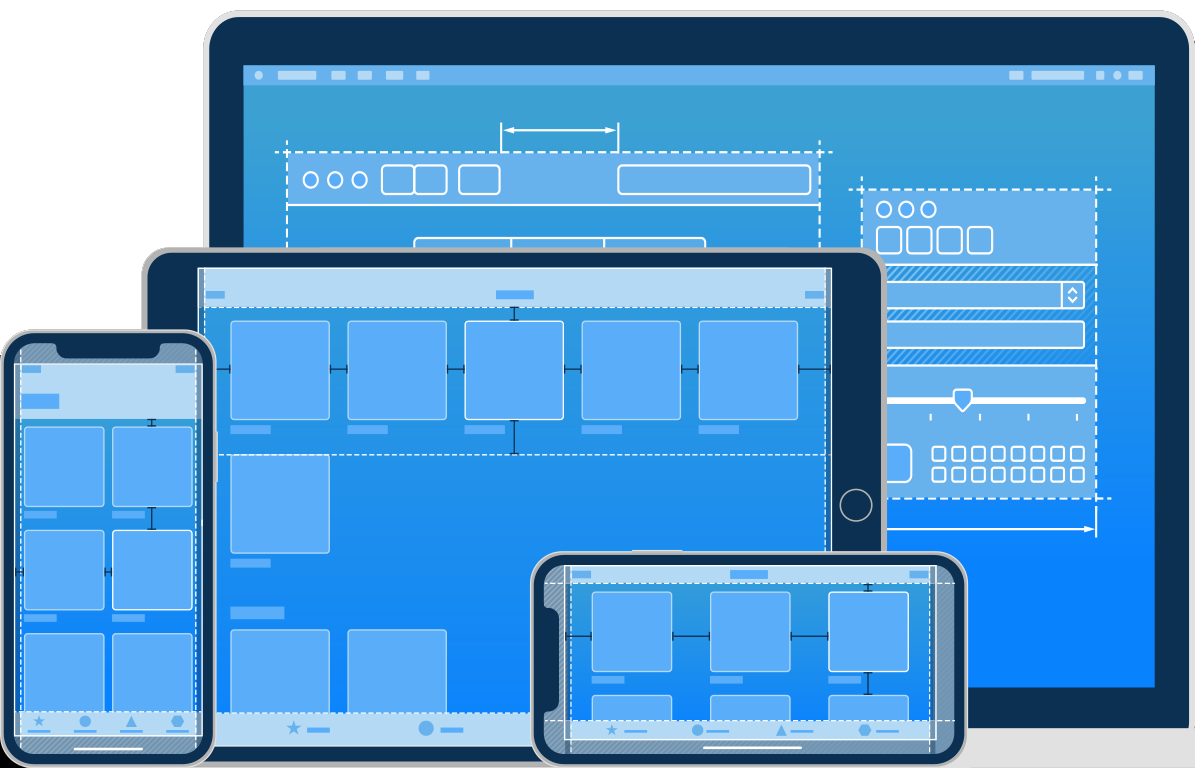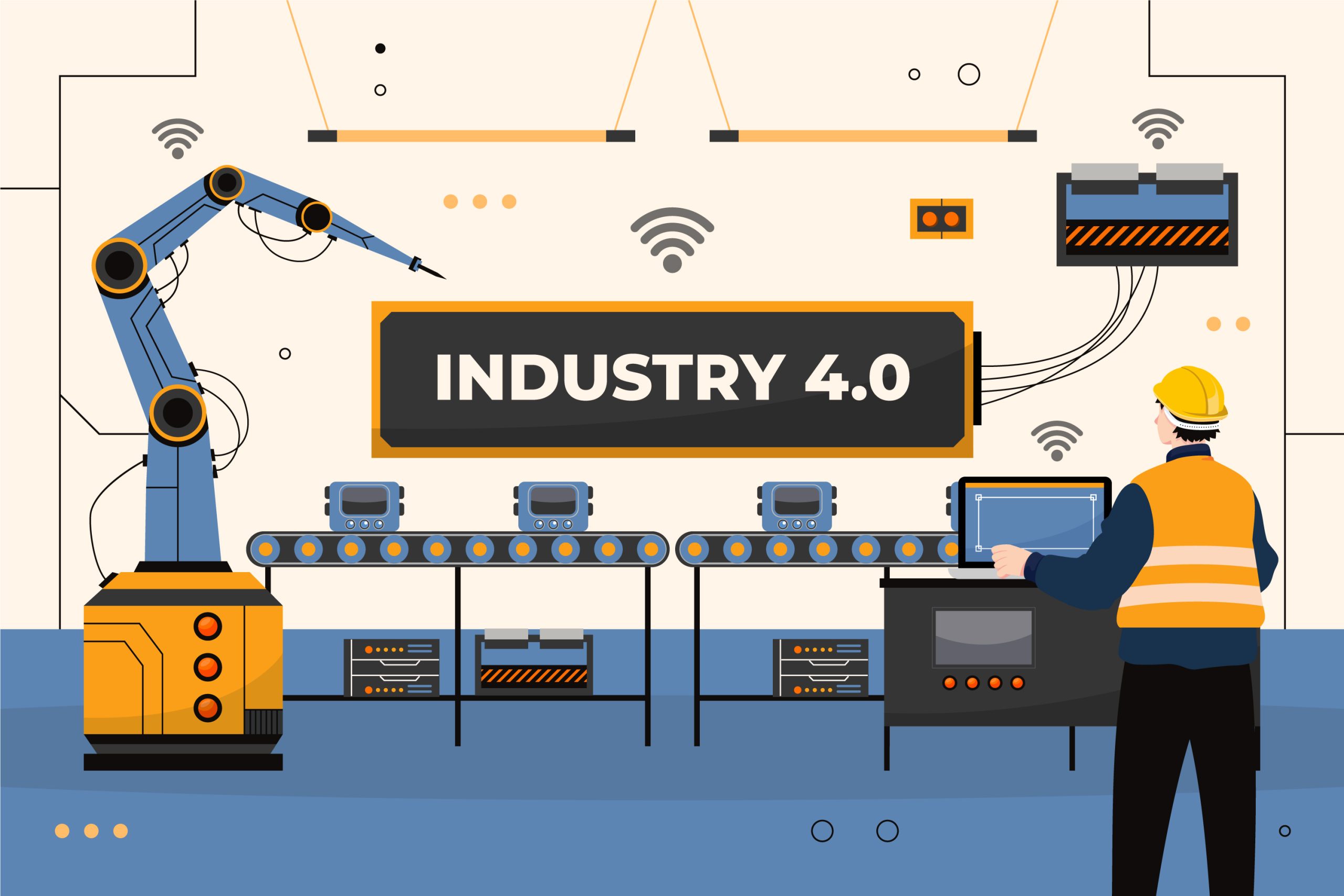Secrets for Successful Android App Development in 2025
Why Salesforce and ERP Integration Fuels Business Growth
Power BI and Excel: How to Leverage Both for Data Reporting
Tips to Find the Right App Development Partner: Key Considerations
Achieving Efficiency in Process Automation
Automation is the process of using technology, such as software, machinery, and other systems, to perform tasks and processes with minimal or no human intervention. Its primary goals are to increase efficiency, improve accuracy, reduce costs, and free up human resources for more complex and creative tasks. Automation is widely used in various industries, including manufacturing, IT, finance, and service sectors.
What is Process Automation?
Process automation is the use of technology to execute recurring tasks or processes in a business where manual effort can be replaced. It aims to streamline workflows, reduce the need for human intervention, improve efficiency, and ensure consistency in operations. By automating processes, organizations can save time, reduce errors, and increase productivity. Common tools for process automation include software applications, robotic process automation (RPA), and artificial intelligence (AI) systems.
Key reasons why Process Automation fails.
- Lack of Clear Objectives: Without well-defined goals and expectations, it’s difficult to measure success or ensure the project meets business needs.
- Inadequate Planning and Preparation: Failing to thoroughly plan and prepare for automation can lead to missed requirements, unrealistic timelines, and resource shortages.
- Insufficient Stakeholder Engagement: If key stakeholders, including end-users, are not involved in the project, the solution may not meet their needs or gain necessary support.
- Poor Change Management: Automation often requires changes in workflows and job roles. If these changes are not well-managed, employees may resist or not adapt well to the new system.
- Lack of Expertise: Without the right technical skills and experience, the automation solution may be poorly designed or implemented, leading to technical issues and inefficiencies.
- Overlooking Process Analysis: Automating a poorly designed process will not yield the desired benefits. It’s crucial to optimize the process before automating it.
- Insufficient Testing and Maintenance: Failing to thoroughly test the automated processes can result in errors and disruptions. Continuous maintenance is also necessary to address any issues and make improvements.
- Ignoring Data Quality: Automation relies on accurate and consistent data. Poor data quality can lead to errors and inefficiencies in automated processes.
- Lack of Scalability: An automation solution that cannot scale with the business can quickly become obsolete or require costly rework.
How to overcome challenges in Process Automation?
- Define Clear Objectives and Scope
- Set Specific Goals: Clearly outline what the automation project aims to achieve, such as reducing costs, improving accuracy, or increasing speed. These goals should be measurable and aligned with overall business objectives.
- Scope Management: Define the boundaries of the project to prevent scope creep. Identify which processes are to be automated and establish criteria for success.
- Thorough Planning and Preparation
- Detailed Roadmap: Develop a comprehensive project plan that includes timelines, milestones, resource allocation, and risk management strategies.
- Resource Assessment: Ensure that you have the necessary resources, including skilled personnel, technology, and budget, before starting the project.
- Engage Stakeholders Early and Often
- Inclusive Involvement: Involve all relevant stakeholders, including management, IT, and end-users, from the outset. Their input can provide valuable insights and help in gaining buy-in.
- Regular Communication: Maintain open lines of communication throughout the project to keep stakeholders informed and engaged.
- Effective Change Management
- Change Management Plan: Develop a plan to manage the changes automation will bring. This should include strategies for training, communication, and support to help employees adapt.
- Training Programs: Provide comprehensive training to ensure that users understand how to work with the new automated processes.
- Build Expertise and Leverage External Knowledge
- Skilled Team: Assemble a team with the necessary technical and process expertise. This might include hiring new talent or upskilling existing employees.
- Consult External Experts: When necessary, seek advice from consultants or experts in process automation to guide the project.
- Optimize Processes before Automating
- Process Analysis: Conduct a thorough analysis of the processes you plan to automate. Identify inefficiencies and areas for improvement.
- Process Redesign: Redesign processes to optimize performance before implementing automation. This ensures that you are not automating inefficiencies.
- Comprehensive Testing and Continuous Maintenance
- Rigorous Testing: Perform extensive testing of the automated processes in a controlled environment before full deployment. This helps identify and fix issues early.
- Ongoing Maintenance: Establish a maintenance plan to regularly review and update the automated systems. This ensures they continue to function correctly and adapt to any changes in the business environment.
- Accurate Cost Estimation and Budgeting
- Detailed Budgeting: Create a detailed budget that accounts for all potential costs, including initial implementation, training, maintenance, and potential contingencies.
- Monitor Expenses: Regularly track and review expenses to ensure the project stays within budget.
- Ensure Data Quality and Integration
- Data Cleaning: Ensure that the data used in the automation process is accurate, complete, and consistent. Clean and standardize data before implementation.
- Seamless Integration: Ensure that the automation tools integrate smoothly with existing systems and data sources. This prevents data silos and ensures seamless operation.
- Design for Scalability and Flexibility
- Scalable Solutions: Choose automation tools and technologies that can scale with your business. This ensures that the solution can grow and adapt as your needs change.
- Flexible Architecture: Design the system to be flexible and adaptable, allowing for easy modifications and updates as new requirements arise.
Let’s have a look at Recent Trends in Process Automation:
- AI and Machine Learning Integration: AI and machine learning are being increasingly integrated into process automation to enhance decision-making, predict outcomes, and improve efficiency. This includes predictive maintenance, anomaly detection, and intelligent process automation (IPA).
- Robotic Process Automation (RPA): RPA continues to be a major trend, with more sophisticated bots that can handle complex tasks and integrate with various systems. The focus is on scaling RPA across the enterprise and integrating it with other technologies like AI and machine learning.
- Intelligent Document Processing (IDP): IDP uses AI to automate the processing of unstructured data from documents, emails, and other sources. This helps in streamlining data entry and improving accuracy.
- Hyper automation: This involves the use of multiple technologies such as RPA, AI, machine learning, and analytics to automate as many business processes as possible. Hyper automation aims to create a more comprehensive and efficient automation strategy.
- Low-Code/No-Code Platforms: These platforms allow business users to create automation workflows without extensive programming knowledge. This democratizes process automation and accelerates digital transformation initiatives.
- Process Mining and Discovery: Process mining tools help organizations understand and analyze their existing processes to identify automation opportunities. These tools provide insights into process inefficiencies and bottlenecks.
- Cloud-Based Automation Solutions: Cloud-based automation solutions offer scalability, flexibility, and reduced infrastructure costs. They also enable remote work and collaboration, which is increasingly important in today’s business environment.
Conclusion:
While the path to process automation might be difficult, knowing and overcoming these barriers helps pave the road for effective adoption.
Businesses can address these challenges by prioritizing change management, phased deployment, seamless integration, skill development, data security, process definition, and transparent measurement.
Embracing these solutions not only ensures a smoother transition but also positions organizations for long-term success in an increasingly automated world.
Measuring Key metrics for BI implementation success
Ensuring Compliance in Today’s Data-Driven Era
We live in an era where digitalization shapes all our interactions, transactions, and work. Digital Transformation is no longer a buzzword – it is a necessity for businesses to integrate digital technologies in all aspects of their operations to survive and thrive.
However, most industries need to comply with the laws and regulations applicable to ensure the trust and security of their stakeholders and customers. While digital transformation can drive innovation and give a competitive edge, failure to consider its impact on regulations can result in penalties, lawsuits, and loss of reputation.
Ensuring regulatory compliance is an integral part of your digital transformation strategy. It can help your business avoid pitfalls and give you a competitive edge in the industry.
In this blog, we will explore how businesses can reap the benefits of ensuring compliance in the age of digital transformation.
Regulatory Compliance in highly regulated industries
While every industry operates on some form of rules, laws and regulations, some sectors have more stringent regulatory laws than others. Industries like Pharmaceutical and Healthcare, Finance & Banking, Education, and the legal sector (to name a few) have a heavier impact of laws and regulations in their functioning.
The reason is that these industries generate and use sensitive and confidential data -like personal, medical, financial information, and trade secrets. Recently, there has been a shift in these industries towards digital technologies to collect, analyze, and store data from various sources – whether it is cloud services, IoT implementation, or using BI (Business Intelligence) software for data analytics.
This technological shift in operations makes enterprises vulnerable to security breaches and data leaks, and it is critical to safeguard this data to protect public interests.
The regulatory authorities monitoring this compliance ensure that organizations handle data with ethical fairness and transparency in all functions, including while implementing digital transformation initiatives.
For example, the healthcare industry uses confidential patient data for research, drug development and patient outcomes. While they have adopted digitalization in the form of EHRs (Electronic Health Records) and telemedicine, they must also comply with the GDPR (General Data Protection Regulation) in Europe and HIPAA (Health Insurance Portability and Accountability Act) in the US.
Similarly, the Finance industry is rapidly evolving and adopting advanced technologies like Blockchain, Artificial Intelligence, and advanced data analytics and BI (Business Intelligence) tools. In doing so, they must consider the impact of technologies adopted on compliance with GDPR and the Sarbanes-Oxley Act.
How can companies Ensure compliance while adopting data-driven processes?
Industries can successfully implement data-driven initiatives and technologies while navigating regulations and compliance in the following ways:
Reviewing existing compliance programs
Implementing an ISMS (Information Security and Management System) like ISO and other external audits
Setting up Data Policies and Procedures
Implementing measures for data protection and security
Conducting Regular Internal audits for data protection
Balancing Innovation with Compliance in the Age of Digital Transformation
While innovation is the catalyst for industries to drive growth, compliance is the backbone of highly regulated industries that keeps them from falling apart. It is crucial to balance the innovation brought about by implementing digital transformation with the necessity of regulations.
To maintain this delicate balance, innovation and compliance must be netted into the organization’s culture.
Your digital transformation strategies should include selecting technologies that align with the business’s operational goals and objectives. On the other hand, enterprises should adopt a compliance-first culture to ensure that none of the technologies employed to collect, analyze, and store data overlooks the data protection and regulatory guidelines. Whether an MSE or an international enterprise with varying local laws and rules, industries can adapt their digital strategies coordinated with the regulations respective to their operating regions.
Conclusion
As a final note, while implementing digital transformation initiatives – whether developed in-house or by hiring a technology service provider in – let’s say, Cloud, IoT, or BI services, ensuring compliance with the regulations is tricky but crucial for businesses. By ensuring compliance with data protection laws, companies can avoid unnecessary penalties and losses and maintain trust and goodwill among their stakeholders and customers.
Additionally, the digital transformation strategy must involve a fine balance between technological innovations and following rules and laws to tread the path of growth with a competitive edge in the digital era and beyond.
At Codeplateau, we consider data protection and privacy in high regard while ensuring our customers can harness the full benefits of our digital transformation services.
If you have any questions or would like to know more about our services, feel free to contact us– we are always happy to help!
Digital Transformation Myths Debunked
What is Industry 4.0? The Fourth Industrial Revolution.
The term “industry 4.0,” or “fourth industrial revolution,” refers to a new stage of the industrial era. It is typified by incorporating cutting-edge technologies into production procedures, creating “smart factories” with autonomous, networked machines and systems. This revolution creates intelligent, networked production environments by utilizing cloud computing, artificial intelligence (AI), cyber-physical systems, and the Internet of Things (IoT).
Let’s see how Industry 4.0 technologies are changing manufacturing.
The adoption of Industry 4.0 technologies is transforming manufacturing in profound ways:
- Increased Efficiency
Automation and AI
- Real-time Monitoring: Automated systems and AI algorithms continuously monitor production processes, collecting and analyzing data to optimize performance. This real-time monitoring helps identify bottlenecks and inefficiencies, allowing for immediate corrective actions.
- Optimization: AI-driven analytics optimize resource usage, energy consumption, and process parameters, reducing waste and improving overall efficiency. This leads to lower production costs and higher output.
- Enhanced Flexibility
Smart Factories
- Adaptability: Smart factories equipped with interconnected machines and flexible production lines can quickly adjust to changes in product demand and customization requests. This adaptability enables manufacturers to produce a wide variety of products without significant downtime or retooling.
- Agility: Advanced manufacturing systems can seamlessly switch between different production tasks, allowing for just-in-time manufacturing and rapid response to market changes.
- Improved Quality Control
Advanced Sensors and Analytics
- Continuous Monitoring: Advanced sensors embedded in production equipment continuously monitor product quality, ensuring that each item meets specified standards. These sensors detect deviations in real time, allowing for immediate corrective actions.
- Early Defect Detection: By analyzing data from multiple sources, AI and machine learning algorithms can identify patterns that indicate potential defects, enabling early intervention and reducing the likelihood of defective products reaching customers.
- Supply Chain Integration
- Seamless Communication: IoT devices and cloud-based platforms enable real-time data exchange and communication across the supply chain. This integration ensures that all stakeholders, from suppliers to distributors, have access to up-to-date information.
- Improved Transparency: Enhanced visibility into the supply chain helps manufacturers track the movement of raw materials, components, and finished products. This transparency reduces delays, improves inventory management, and ensures timely delivery.
- Predictive Maintenance
Sensor-equipped Machines
- Condition Monitoring: Machines equipped with IoT sensors monitor their own performance and condition. These sensors collect data on factors such as temperature, vibration, and usage patterns.
- Predictive Analytics: AI-driven predictive analytics analyze this data to predict when maintenance is needed, allowing for scheduled maintenance before a breakdown occurs. This proactive approach minimizes unexpected downtime, extends equipment lifespan, and reduces maintenance costs.
Challenges and Considerations
While Industry 4.0 offers tremendous opportunities, it also presents challenges that must be addressed:
- Cybersecurity Risks: Increased connectivity exposes manufacturing systems to cyber threats. Robust cybersecurity measures are essential to protect sensitive data and prevent disruptions.
- Skill Gaps: The shift towards digital technologies requires upskilling and reskilling the workforce. Investment in training programs is crucial to equip employees with the necessary competencies.
- Integration Complexity: Integrating diverse technologies and legacy systems into cohesive Industry 4.0 ecosystems can be complex and costly. Compatibility standards and strategic planning are essential for successful implementation.
Time to time transformation: Historical Context for Industry 4.0
1.First Industrial Revolution (late 18th to early 19th century)
Key Characteristics:
- Steam Power: Introduction of the steam engine revolutionized production.
- Mechanization: Innovations in textile manufacturing with machines like the spinning jenny and power loom.
- Iron and Coal: Advances in iron production and coal use fueled growth.
Impact:
- Economic Growth: Increased productivity and economic output.
- Urbanization: Shift from rural to urban living for factory jobs.
- Societal Changes: Emergence of new social classes.
2.Second Industrial Revolution (late 19th to early 20th century)
Key Characteristics:
- Electricity: Enabled safer, more efficient factories.
- Mass Production: Assembly lines, exemplified by Henry Ford’s automotive production.
- New Materials and Chemicals: Development of steel and synthetic chemicals.
Impact:
- Global Trade: Enhanced transportation and communication.
- Labor Movements: Growth of unions and advocacy for workers’ rights.
- Technological Advancements: Progress in various industries.
3.Third Industrial Revolution (mid-20th century)
Key Characteristics:
- Electronics and Computers: Rise of transistors, integrated circuits, and computers.
- Automation: Introduction of programmable logic controllers (PLCs) and robotics.
- Digital Revolution: Emergence of the internet and personal computing.
Impact:
- Information Age: Shift towards knowledge-based economies.
- Globalization: Increased international market integration.
- Workforce Changes: Demand for technical and knowledge-based skills.
4.Fourth Industrial Revolution (21st century)
Key Characteristics:
- Fusion of Technologies: Integration of IoT, AI, and advanced robotics.
- Smart Manufacturing: Real-time data collection and analysis.
- Advanced Robotics: Autonomous robots with AI capabilities.
- Additive Manufacturing: 3D printing for customized production.
- Biotechnology and Genomics: Breakthroughs in medicine, agriculture, and sustainability.
Impact:
- Increased Efficiency: Enhanced productivity and reduced downtime.
- Customization: Ability to produce on demand and adapt to market changes.
- Workforce Transformation: Growing demand for digital and tech skills.
- Ethical Challenges: Issues like data privacy, cyber security, and job displacement.
What Technologies is Driving Industry 4.0?
Several key technologies underpin Industry 4.0:
- Internet of Things (IoT): The Internet of Things (IoT) is a network of interconnected devices that collect and exchange data over the internet, enabling automation and intelligent interaction without human intervention.
- Artificial Intelligence (AI) and Machine Learning (ML): Artificial Intelligence (AI) is the simulation of human intelligence in machines, enabling them to perform tasks like reasoning, learning, and problem-solving. Machine Learning (ML) is a subset of AI that involves training algorithms on data so they can learn patterns and make predictions or decisions without being explicitly programmed.
- Big Data and Analytics: Big Data refers to extremely large datasets that are complex and difficult to process using traditional methods. Analytics involves examining these datasets to uncover patterns, trends, and insights.
- Robotics and Automation: Robotics and Automation in manufacturing involve using robots and automated systems to perform tasks, increasing efficiency, precision, and productivity while reducing human intervention.
- Augmented Reality (AR) and Virtual Reality (VR): Providing immersive training experiences and aiding in complex assembly tasks.
- Cybersecurity: Cybersecurity in the context of the industrial revolution involves protecting industrial systems and networks from cyber threats, ensuring the safety and integrity of data and operations.
Conclusion
Industry 4.0 is revolutionizing manufacturing by integrating advanced technologies that enhance efficiency, flexibility, and quality. From its historical roots in the steam-powered First Industrial Revolution to today’s interconnected smart factories, each phase of industrial development has built upon the last.
With the continued advancement of technologies like IoT, AI, and cloud computing, the Fourth Industrial Revolution promises to drive unprecedented levels of innovation and productivity in the manufacturing sector.
Embracing these technologies enables manufacturers to achieve new levels of efficiency, customization, and competitiveness in the global marketplace.









